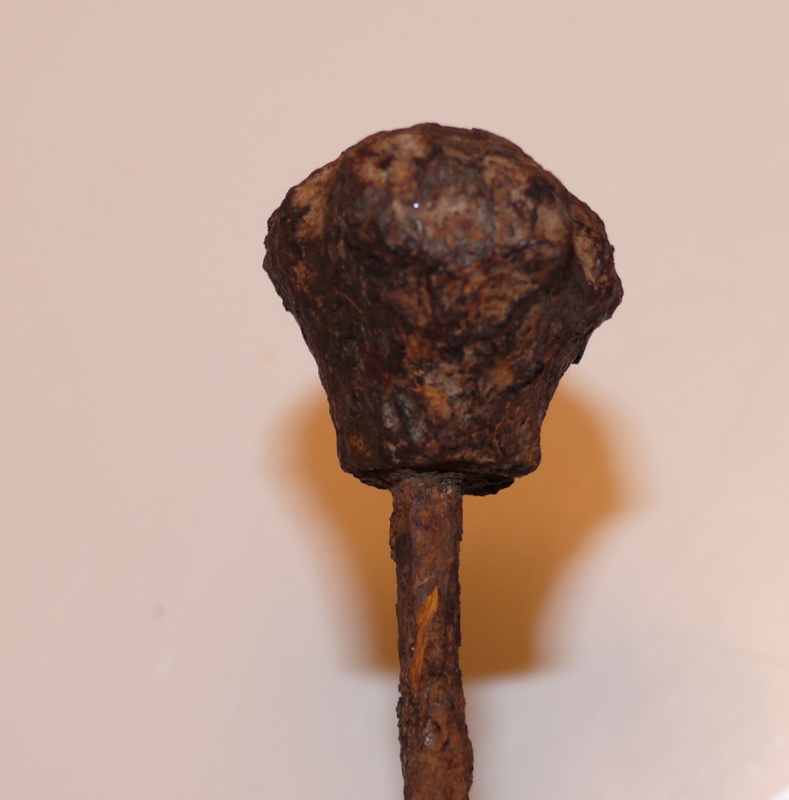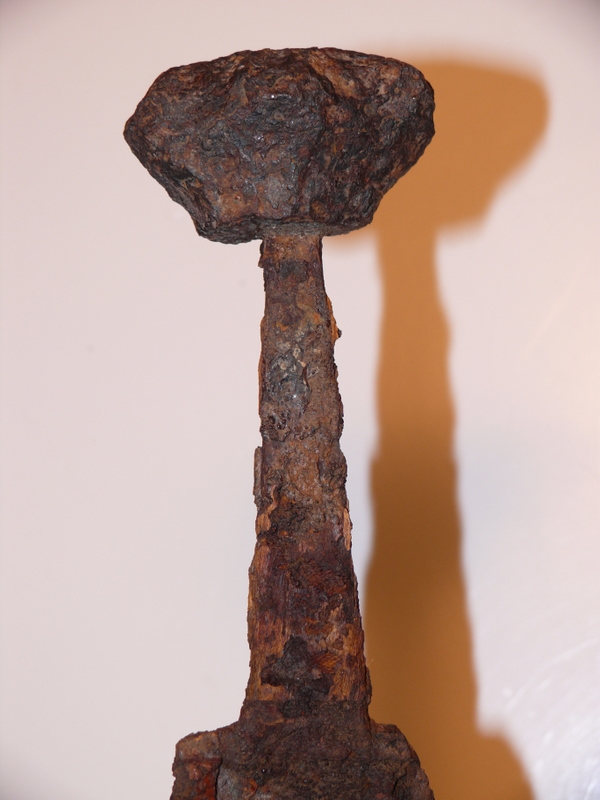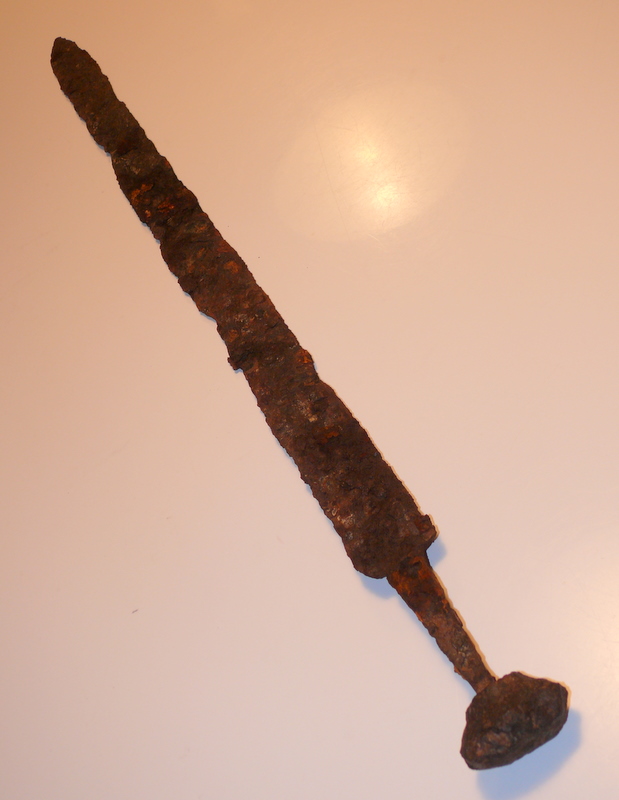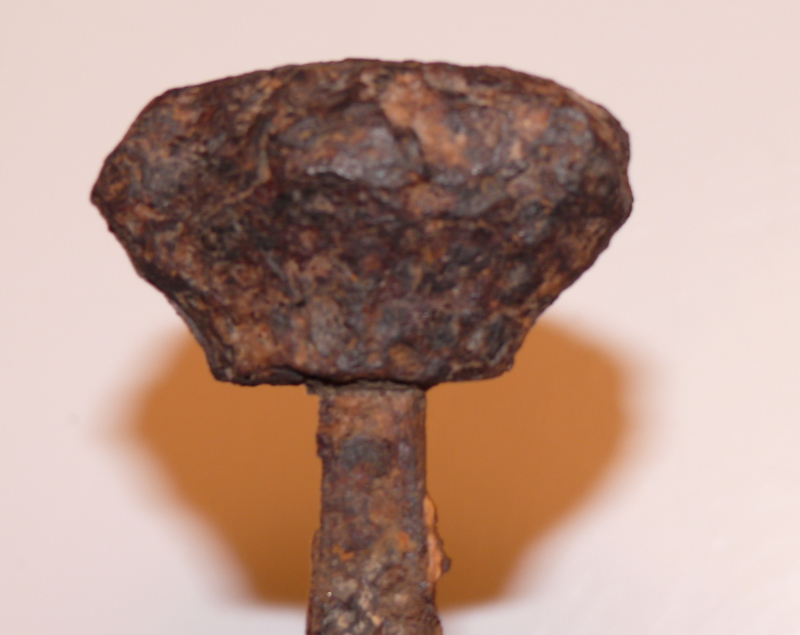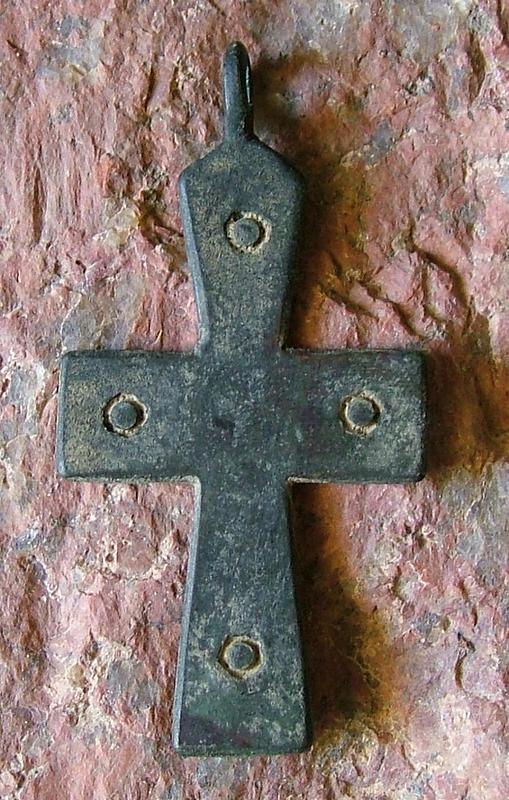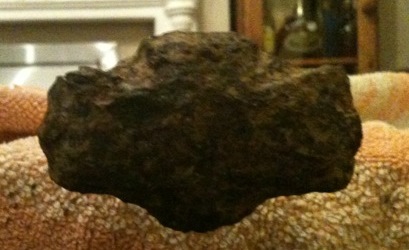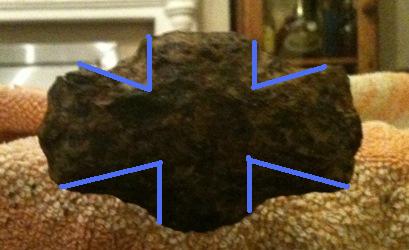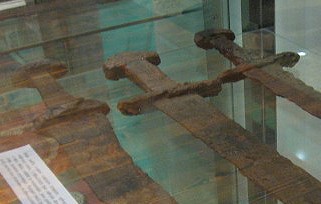herewith a sword with questions,Finding place is Norffolk in the UK.
organic material of the of the scabbard , wood and leather, hairy side inside (both hard as stone) remain adhered at the tang and the blade. edges run parallel to the point. spatulatepoint had reduced during cleaning.
can any body place/date this sword or know a similar?
the type of pommel is also not known to me
what kind of cross has been used on this type ?
ttl length 90cm ,blade 77, tang 10cm, pommel 60mmx37mm , blade width 53mm.
looking forward to the comments.
thanks+regards
[ Download ]
[ Download ]
[ Download ]
[ Download ]
[ Download ]

